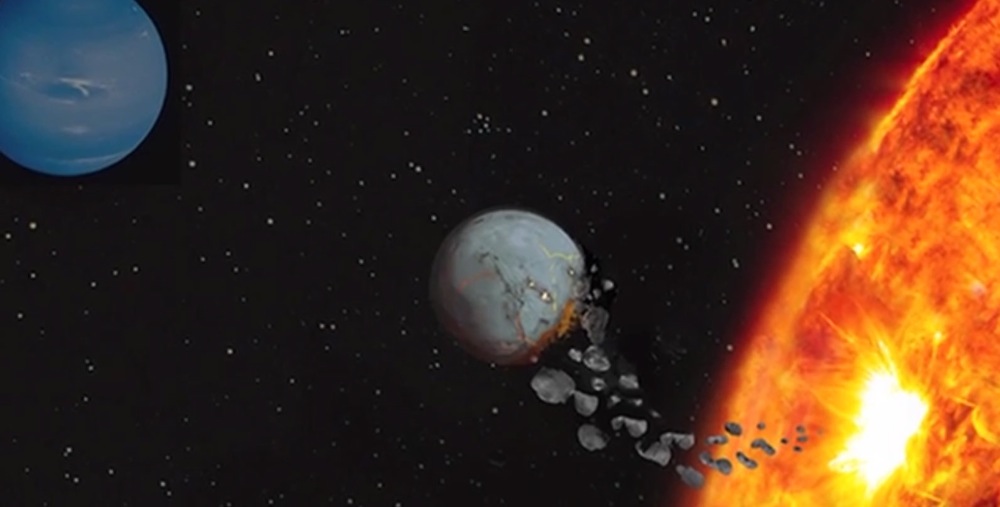Stars That 'Eat' Alien Earths Exposed (Video)

Some stars that give birth to Earth-like rocky planets only to later devour those same daughter worlds, and now scientists say they have a way to find the stellar cannibals.
A team of astronomers say they've developed a way to detect planet-eating stars using their chemical signature. The new method could bolster the search for alien planets outside our solar system, the researchers say.
Rocky planets like Earth, Mars and Venus tend to form relatively close to their parent star, while gas giants like Jupiter develop in the cooler outskirts of the planetary system. But after they are fully formed, gas giants begin to creep inward and their gravity starts to tug on their terrestrial siblings, explained study researcher Trey Mack, an astronomy graduate student at Vanderbilt University. [7 Ways to Find Alien Earths: An Exoplanet Countdown]
"With the right amount of pulling and tugging, a gas giant can easily force a rocky planet to plunge into the star," Mack said in a statement. "If enough rocky planets fall into the star, they will stamp it with a particular chemical signature that we can detect."
Mack and colleagues looked at the binary pair of G-class dwarf stars dubbed HD 20781 and HD 20782, which were formed out of the same celestial dust cloud and now both host their own planets: one is circled closely by two Neptune-size planets; a single Jupiter-size planet orbits the other.
Different elements absorb light in different ways. By looking at the wavelengths of light or spectra of a star, scientists can determine the abundance of certain elements it contains.
Spectra from HD 20781 and HD 20782 showed that these stars, compared with sun, were high in refractory materials — building blocks for Earth-like rocky planets, such as aluminum, silicon, calcium and iron that have melting points higher than 1,200 degrees Fahrenheit (600 degrees Celsius).
Get the Space.com Newsletter
Breaking space news, the latest updates on rocket launches, skywatching events and more!
The researchers' calculations suggest the star with the Jupiter-sized planet would have swallowed the equivalent of 10 Earths. Meanwhile, the star with the two Neptune-sized planets likely consumed 20 Earths' worth of rocky material.

"When we find stars with similar chemical signatures, we will be able to conclude that their planetary systems must be very different from our own and that they most likely lack inner rocky planets," Mack said in a statement. "And when we find stars that lack these signatures, then they are good candidates for hosting planetary systems similar to our own."
The results of the study were published May 7 in the Astrophysical Journal.
Follow Megan Gannon on Twitter and Google+. Follow us @Spacedotcom, Facebook or Google+. Originally published on Space.com.
Join our Space Forums to keep talking space on the latest missions, night sky and more! And if you have a news tip, correction or comment, let us know at: community@space.com.

Megan has been writing for Live Science and Space.com since 2012. Her interests range from archaeology to space exploration, and she has a bachelor's degree in English and art history from New York University. Megan spent two years as a reporter on the national desk at NewsCore. She has watched dinosaur auctions, witnessed rocket launches, licked ancient pottery sherds in Cyprus and flown in zero gravity on a Zero Gravity Corp. to follow students sparking weightless fires for science. Follow her on Twitter for her latest project.









